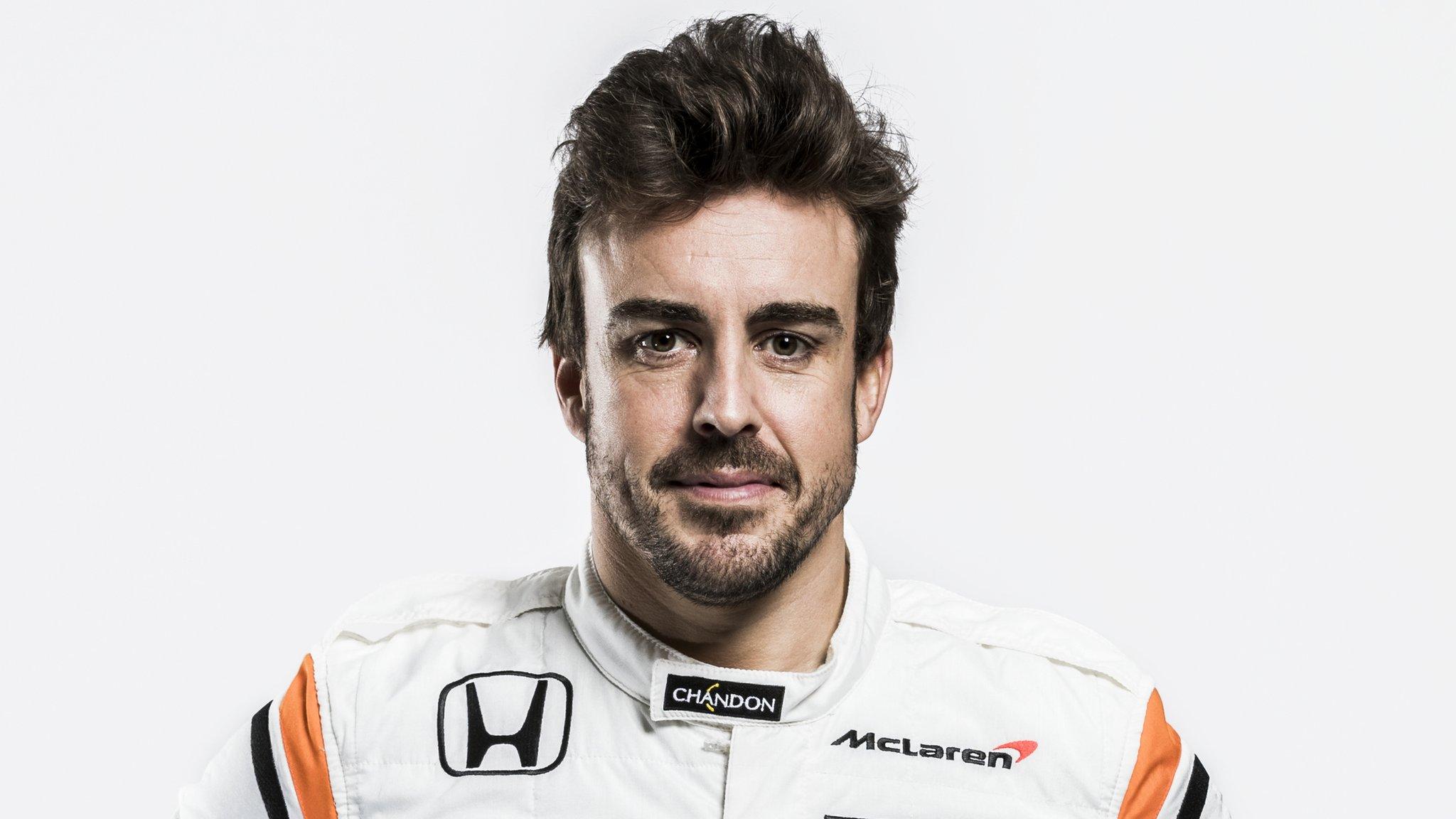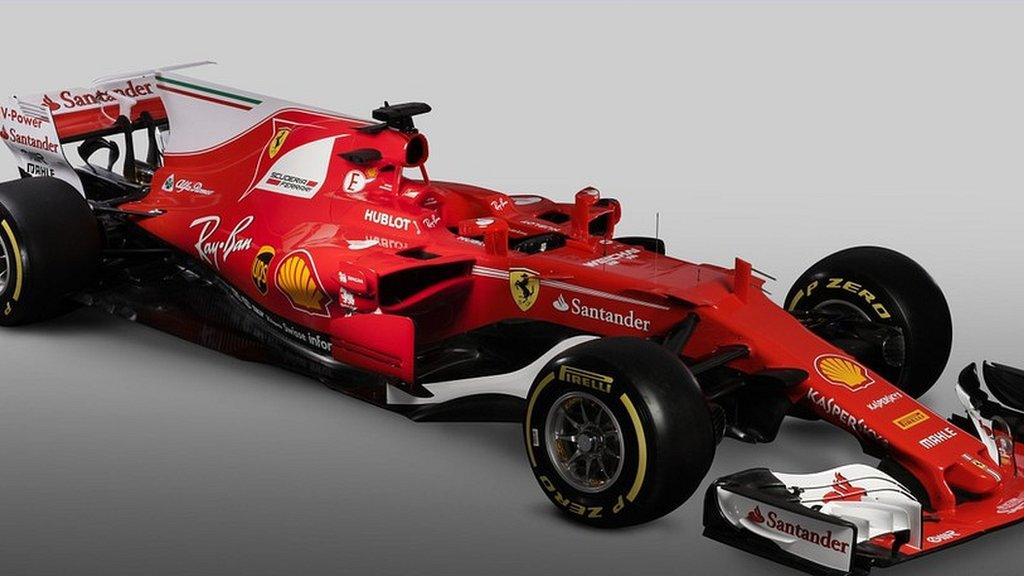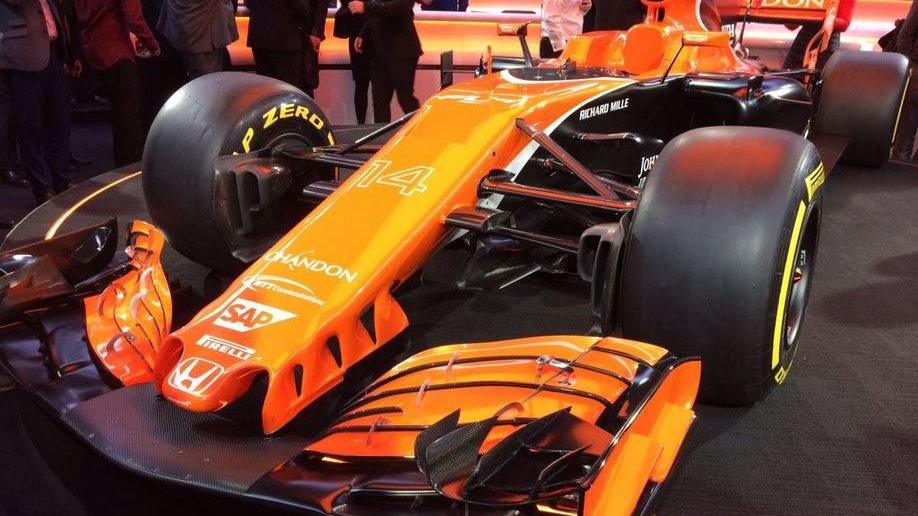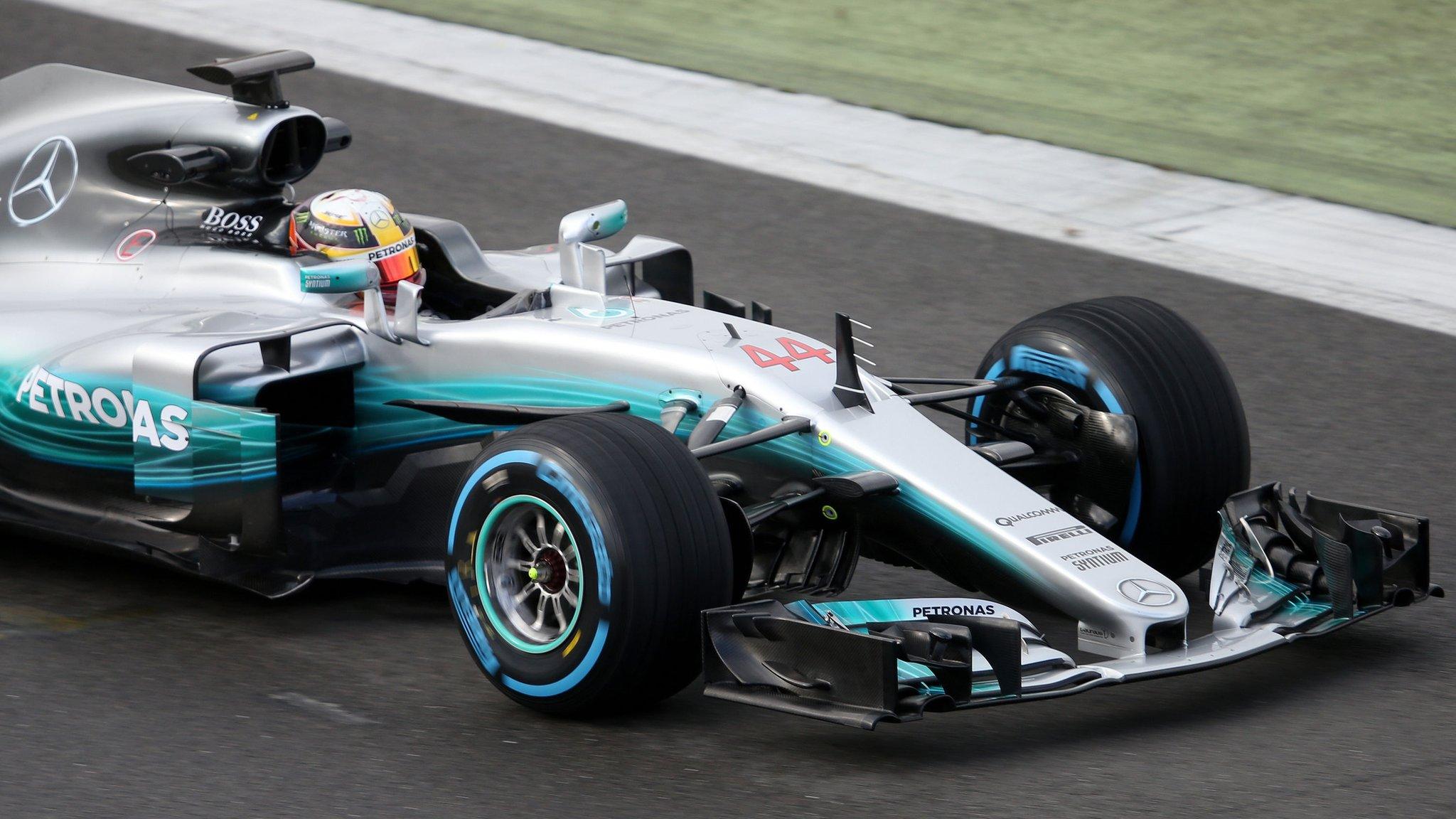Formula 1 pre-season testing: What to look out for & what has changed
- Published
- comments
Palmer's guide to the new F1 cars
Formula 1 pre-season testing | |
|---|---|
Venue: Barcelona Date: 27 February-2 March and 7-10 March Coverage: Live text commentaries, reports and analysis on the BBC Sport |
Lewis Hamilton begins his quest for a fourth world title as pre-season testing begins in Barcelona on Monday.
Hamilton, 32, and his Mercedes team will be joined by the other nine outfits as they begin preparations with new cars designed to radically different rules.
The promise is for cars up to five seconds a lap faster, more dramatic and more demanding of the drivers.
And the hope is that at least one team can compete with Mercedes for the title after three years of domination.
However, expectations of a serious threat to the constructors' champions were dampened last week with the launch of Mercedes' new car, which drew admiring glances from both observers and rival teams.
McLaren aerodynamics chief Peter Prodromou said: "The car that has impressed me so far is Mercedes - clearly they have put a huge amount of man hours into the car."
Ferrari, like Mercedes and a handful of other teams, have already put a few miles on their new car in a so-called 'shake-down' test.
The Italian team have hopes of challenging after a winless and sometimes fractious 2016 but, for a challenge to Mercedes, most are looking at Red Bull, whose new car was unveiled to great anticipation on Sunday.
What to look out for
It is notoriously difficult to glean an accurate picture of form from headline lap times at pre-season testing, but we should get indications of various teams' positions.
The first task for all teams will be to run through systems checks to validate the reliability and operations of their cars. Any team who can run consistently at that stage - as Mercedes did this time last season - has a head-start on their rivals.
The large part of Red Bull's deficit to Mercedes last year was in their Renault engine. The French company has hopes of bridging the gap this year, but the engine hit reliability troubles in a 'shake-down' test with Red Bull junior team Toro Rosso on Thursday.
Mercedes, meanwhile, are said to have made their own significant step forward with their engine; a worrying sign for the rest, if true.
As the test develops, detailed analysis of lap times as the teams complete longer runs can provide a reasonably accurate picture of form.
The BBC Sport website will be providing comprehensive coverage of all eight days of pre-season testing over the next fortnight - live text commentaries, reports and analysis.
Bottas says he will race Hamilton
It's not just about the cars
Along with wider, faster cars, another major change in F1 this year is the tyres.
Supplier Pirelli has been tasked with providing tyres that are not just wider than last year, but also behave differently.
It has been asked for tyres that allow drivers to push closer to the limit for much longer periods, something that has not been possible for the past six years as tyres overheated and lost grip if a driver was flat out for more than a lap or two.
Pirelli has said it is confident it can deliver, but insiders have expressed reservations after a mixed period of development testing in the past few months.
It will only be when the cars start to run seriously at the Circuit de Barcelona-Catalunya that it will be possible to judge whether Pirelli has succeeded.
New F1 boss Chase Carey on big talking points
What are the rule changes?
The new rules focus on making the cars wider and producing more downforce.
The overall width between the outer wheel rims has gone up from 1.8m to 2m, and the bodywork has been widened from 1.4m to 1.6m.
In addition, the front wing has been widened and its two sides now sweep back from a forward central section, and the rear wing is lower and wider.
Most crucially, the floor area under the car has been made much bigger and there is more area to the diffuser.
In combination with more freedom on bodywork design around the front of the floor beside the cockpit, this is expected to lead to an increase in downforce of at least 30%.
- Published25 February 2017

- Published24 February 2017

- Published25 February 2017

- Published24 February 2017

- Published23 February 2017
